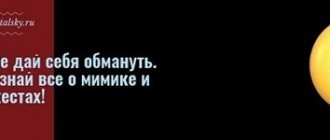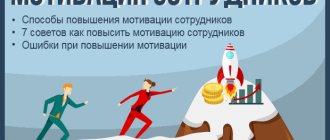Content
- 1 Distance units
- 2 Metric system
- 3 British/American system
- 4 Old Russian system
- 5 Japanese system
- 6 Ancient Greek system
- 7 Typographic system
- 8 Fleet system
- 9 Units used in astronomy
- 10 Units used in physics
- 11 Units used in technology
- 12 Links
- 13 Notes
Distance units
Metric system
The unit of distance and one of the basic units in the International System of Units (SI) is the meter. The meter is also a unit of measurement of distance and is one of the basic units in the metric systems MKS, MKSA, MKSK, MKSG, MSC, MKSL, MSS, MKGSS and MTS[1].
In the GHS system, the unit of measurement for distance is the centimeter.
In practice, multiple and submultiple units of meters are also used, formed using standard SI prefixes:
| Multiples | Dolnye | ||||||
| magnitude | Name | designation | magnitude | Name | designation | ||
| 101 m | decameter | I'll give | dam | 10−1 m | decimeter | dm | dm |
| 102 m | hectometer | hmm | hm | 10−2 m | centimeter | cm | cm |
| 103 m | kilometer | km | km | 10−3 m | millimeter | mm | mm |
| 106 m | megameter | Mm | mm | 10−6 m | micrometer | µm | µm |
| 109 m | gigameter | Um | Gm | 10−9 m | nanometer | nm | nm |
| 1012 m | terameter | Tm | Tm | 10−12 m | picometer | pm | pm |
| 1015 m | petameter | PM | Pm | 10−15 m | femtometer | fm | fm |
| 1018 m | exameter | Em | Em | 10−18 m | attometer | am | am |
| 1021 m | zettameter | Zm | Zm | 10−21 m | zeptometer | zm | zm |
| 1024 m | iottameter | Them | Ym | 10−24 m | ioctometer | them | ym |
| not recommended not used or rarely used in practice | |||||||
British/American system
- League (lie) = 4.828032 km
- Mile = 1.609344 km
- Furlong = 201.16 m
- Chain = 20.1168 m
- Rod = 5.0292 m
- Yard = 91.44 cm
- Inspection foot = 1.000002 feet = 30.48006096 cm
- Foot = 30.48 cm
- Link = 20.1168 cm
- Hand = 10.16 cm
- Inch = 2.54 cm
- Large line = 0.254 cm
- Small line = 0.2116 cm
- Mil = 0.0254 mm
Old Russian system
- 1 span = 17.78 cm
- 2 spans = 1 foot (35.56 cm)
- 3 spans = 1 cubit (53.34 cm)
- 4 spans = 1 arshin (71.12 cm)
- 5 spans = 1 step (88.9 cm)
- 6 spans = 1 measure or half a fathom (106.68 cm)
- 7 spans = 1 forehead (124.46 cm) (7 spans in the forehead)
- 8 spans = 1 column (142.24 cm)
- 9 spans = 1 staff (160.02 cm)
- 10 spans = 1 twisted staff (177.8 cm)
- 12 spans = 1 fathom (213.36 cm) (side)
- 16 spans = 1 circle (284.48 cm)
- 17 spans = 1 oblique fathom (302.26 cm) (hypotenuse)
- 1/2 span = 1 metacarpus (8.89 cm)
- 1/4 span = 1 vershok (4.445 cm)
- 1/16 span = 1 nail (1.11125 cm)
- 1/256 span (1/16 noct) = 1 line (0.069453 cm)
- 1/4096 span (1/16 line) = 1 hair (0.00434 cm)
- 1/65536 span (1/16 hair) = 1 hair (0.00027 cm)
- 1 verst = 6000 spans (1066.8 meters)
- 1 milepost = 1517.41632 meters
- 1 measured verst = 1000 fathoms (2133.6 meters)
- 1 mile = 7 versts (7.4676 km)
- Great fathom ≈ 244.0 cm
- City fathom ≈ 284.8 cm
- Greek fathom ≈ 230.4 cm later equaled Attic stade = 6 English feet 1 inch = 185.42 cm
- Official (measured, three-arshin) fathom. In the 16th century, a fathom was equated to 3 arshins and began to be called breech, or three-arshin (213.36 cm)
- Masonry fathom ≈ 159.7 cm
- Oblique fathom - the distance from the toes to the end of the fingers of the hand extended diagonally above the head ≈ 248 cm
- Small fathom - the distance from the hand raised to shoulder level to the floor ≈ 142.4 cm
- Mach fathom - the distance between the outstretched fingers of outstretched (swung) hands. For example, the height of the Ivan the Great bell tower in the Kremlin is expressed in such mach fathoms, which are easy to count. This most ancient measure, starting from the 16th century, became unofficial, everyday. = 2.5 arshins = 152-177.8 cm
- Fathom = 6 English feet = 182.88 cm
- Narodnaya fathom ≈ 176.0 cm
- Simple fathom ≈ 150.8 cm
- Fathom without a meter - the greatest distance between the sole of the left foot and the end of the thumb of the raised right hand ≈ 197.2 cm
- Pipe fathom - only the length of pipes in salt mines was measured ≈ 187 cm
- Tsarskaya fathom ≈ 197.4 cm
- Church fathom ≈ 186.4 cm
- Four arshin fathom = 4 arshins = 284.48 cm
| : Incorrect or missing image | This section is missing references to information sources. Information must be verifiable, otherwise it may be questioned and deleted. You may edit this article to include links to authoritative sources. This mark is set September 16, 2012 . |
K:Wikipedia:Articles without sources (type: not specified)
Japanese system
- Mo = 0.003030303 cm
- Rin = 0.03030303 cm
- Bu = 0.3030303 cm
- Sun = 3.030303 cm
- Shaku = 30.30303 cm
- Ken = 181.8182 cm
- Hiro = 181.8182 cm
- Jo = 303.0303 cm
- То = 10909.09 cm
- Ri = 392727.3 cm
Ancient Greek system
- Palaista = 7 cm
- Plethra = 31 m
- Mile = 1.388 km
- Stages = 185.136 m
- Plethra = 30.856 m
- Amma = 18.514 m
- Akena (decapod) = 3.086 m
- Orgy (hexapod) = 1.851 m
- Bema (step) = 77.14 cm
- Pechis (cubit) Greek = 61.712 cm
- Pehis (elbow) short = 46.284 cm
- Pus (ft) = 30.856 cm
- Spitam = 23.142 cm
- Dihas = 15.428 cm
- Palaestra (palm) = 7.714 cm
- Condille = 3.857 cm
- Dactyl (finger) = 1.928 cm
- Olympic Stadium = 192.27 m
- Attic stage = 184.98 m
- Ptolemaic stage = 185 m
Typographic system
- twip = 1/20 point
- point = 0.352777... mm (Adobe point) or 0.3759 mm (Dido point) or 0.3515 mm (Hawks point) or 0.375 mm (metric point) or 0.3473 mm (Fournier point)
- cicero = 12 points (= 4.2333... mm in the Adobe system)
- nonpareil = 5,708 points
Fleet system
- Nautical mile = 1852.000 m (international) or 1853.184 m (Imperial)
- Kabeltov = 185.2000 m (international) or 182.88 m = 100 fathoms
- Fathom, fathom = 1.8288 m = 6 feet
Units used in astronomy
- radius of the Moon ( R☾
) = 1737.10 km; - radius of the Earth ( R⊕
) = 6371.0 km; - radius of Jupiter ( R♃
or
RJ
) = 69,911 km; - light second = 299,792,458 m;
- radius of the Sun ( R
☉) = 6.9551·105 km; - light month = 783934206048416.66… m
- light minute = 17,987,547,480 m;
- astronomical unit = 149,597,870.700 km [2];
- spat (unit of length) ( English
) = 1·1012 m; - daylight hour = 1,079,252,848,800 m;
- daylight hours = 25,902,068,371,200 m;
- light week = 181,314,478,598,400 m;
- light year = 9,460,730,472,581,000 m;
- parsec = (648,000/π) a.u. (exactly) ≈ 206264.806247 a.u. = 3.08567758491·1016 m;
- Siriometer = 106 AU = 149,597,870,700,000,000 m[3];
Units in small font are rarely used or are outdated.
Units used in physics
- Planck length ≈ 1.616199(97)·10−35[4][5][6];
- Fermi = 1 fm = 1·10−15 m;
- classical electron radius = 2.8179402894(58)·10−15 m;
- x-unit = 1.00207·10−13 m;
- Compton electron wavelength = 2.4263102175(33)·10−12 m;
- Bohr radius = 5.2917720859(36)·10−11 m;
- angstrom = 1·10−10 m;
Units used in technology
- unit = 44.45 mm = 1.75 inches;
How to find time knowing speed and distance?
In order to find the time it took to travel a path, you need to know the distance and speed. If you divide the distance by the speed, you get the time. An example of such a task:
Problem about the Hare.
The Hare ran away from the Wolf at a speed of 1 kilometer per minute. He ran 3 kilometers to his hole. How long did it take the Hare to reach the hole?
How can you easily solve motion problems where you need to find distance, time or speed?
- Read the problem carefully and determine what is known from the problem statement.
- Write this information on your draft.
- Also write what is unknown and what needs to be found
- Use the formula for problems about distance, time and speed
- Enter known data into the formula and solve the problem
Solution for the problem about the Hare and the Wolf.
- From the conditions of the problem we determine that we know the speed and distance.
- We also determine from the conditions of the problem that we need to find the time it took for the hare to run to the hole.
We write this data in the draft, for example:
Time - unknown
Now let's write the same thing in mathematical symbols:
S - 3 kilometers
V - 1 km/min
t — ?
We remember and write down in a notebook the formula for finding time:
t=S:v
t = 3: 1 = 3 minutes
Links
- [stopudov.info/menu/category/3/ Stopudov.info: metric units of length, national systems, ancient states];
- [www.academia.edu/10191019/%D0%A2%D1%80%D0%B0%D0%B4%D0%B8%D1%86%D0%B8%D0%BE%D0%BD%D0%BD% D0%B0%D1%8F_%D1%80%D1%83%D1%81%D1%81%D0%BA%D0%B0%D1%8F_%D1%81%D0%B8%D1%81%D1% 82%D0%B5%D0%BC%D0%B0_%D0%BC%D0%B5%D1%80_%D0%B4%D0%BB%D0%B8%D0%BD%D1%8B._%D0% 9A%D1%80%D0%B0%D1%82%D0%BA%D0%BE%D0%B5_%D0%BE%D0%BF%D0%B8%D1%81%D0%B0%D0%BD% D0%B8%D0%B5 Belobrov V. A.
Traditional Russian system of length measures. Short description.] - [www.academia.edu/2163842/_Russian_fathoms_system_myths_and_mysteries_ Belobrov V. A.
System of Russian fathoms: myths and mysteries.] - [www.academia.edu/2370017/_Who_are_you_the_Russian_arshin_ Belobrov V. A.
Who are you, Russian Arshin?] - [www.academia.edu/8727064/What ? Belobrov V.A.
What are the versts made of?]. - [www.academia.edu/9917916/About_the_length_of_ancient_russian_roads_About_the_length_of_ancient_russian_roads_Forschung_der_Länge_der_alten_russischen_Wegen_ Belobrov V.A.
About the length of ancient Russian roads]. - [www.academia.edu/9503521/%D0%A0%D0%BE%D0%BB%D1%8C_%D0%9F%D0%B5%D1%82%D1%80%D0%B0_I_%D0%B2_% D1%80%D0%B0%D0%B7%D0%B2%D0%B8%D1%82%D0%B8%D0%B8_%D1%80%D1%83%D1%81%D1%81%D0% BA%D0%BE%D0%B9_%D1%81%D0%B8%D1%81%D1%82%D0%B5%D0%BC%D1%8B_%D0%BC%D0%B5%D1%80_% D0%B4%D0%BB%D0%B8%D0%BD%D1%8B_The_role_of_Peter_the_Great_in_the_development_of_Russian_units_of_measurement_Die_Rolle_von_Peter_der_Gro%C3%9Fe_zur_Entwicklung_der_russischen_System_der_L%C3%A4ngenma% C3%9Fe_ Belobrov V. A.
The role of Peter I in the development of the Russian system of length measures]
Notes
- Dengub V. M., Smirnov V. G.
Units of quantities. Dictionary-reference book. - M.: Standards Publishing House, 1990. - P. 77-82. — 240 s. — ISBN 5-7050-0118-5. - According to the new definition of astronomical unit adopted by the IAU in September 2012.
- [www.wolframalpha.com/input/?i=siriometer WolframAlpha]. [www.webcitation.org/6FlKb1kW0 Archived from the original on April 10, 2013].
- The standard deviation is indicated in parentheses. Thus, the value of the Planck length can be represented in the following forms: \ell_P ≈ 1.616199(97) 10−35 m = = (1.616199 ± 0.000097) 10−35 m = = [1.616102 ÷ 1 ,616296] 10−35 m
- NIST, “[physics.nist.gov/cgi-bin/cuu/Value?plkl Planck length]” (English), [physics.nist.gov/cuu/Constants/index.html NIST's published] CODATA constants
- [physics.nist.gov/cuu/Constants/Table/allascii.txt Fundamental Physical Constants - Complete Listing]
An excerpt characterizing Distance Measurement Units
The doctor came down the stairs and approached her. “He’s feeling better today,” said the doctor. - I was looking for you. You can understand something from what he says, with a fresher head. Let's go. He is calling you... Princess Marya’s heart beat so hard at this news that she, turning pale, leaned against the door so as not to fall. To see him, to talk to him, to fall under his gaze now, when Princess Marya’s whole soul was filled with these terrible criminal temptations, was painfully joyful and terrible. “Let’s go,” said the doctor. Princess Marya entered her father and went to the bed. He lay high on his back, with his small, bony hands covered with lilac knotty veins on the blanket, with his left eye staring straight and his right eye squinted, with motionless eyebrows and lips. He was all so thin, small and pitiful. His face seemed to have shriveled or melted, his features shriveled up. Princess Marya came up and kissed his hand. His left hand squeezed her hand so that it was clear that he had been waiting for her for a long time. He jerked her hand, and his eyebrows and lips moved angrily. She looked at him in fear, trying to guess what he wanted from her. When she changed her position and moved so that her left eye could see her face, he calmed down, not taking his eyes off her for a few seconds. Then his lips and tongue moved, sounds were heard, and he began to speak, timidly and pleadingly looking at her, apparently afraid that she would not understand him. Princess Marya, straining all her attention, looked at him. The comic labor with which he moved his tongue forced Princess Marya to lower her eyes and with difficulty suppress the sobs rising in her throat. He said something, repeating his words several times. Princess Marya could not understand them; but she tried to guess what he was saying and repeated the questioning words he said to the elephant. “Gaga – fights... fights...” he repeated several times. There was no way to understand these words. The doctor thought that he had guessed right, and, repeating his words, asked: is the princess afraid? He shook his head negatively and repeated the same thing again... “My soul, my soul hurts,” Princess Marya guessed and said. He hummed affirmatively, took her hand and began to press it to various places on his chest, as if searching for the real place for her. - All thoughts! about you... thoughts,” he then said much better and more clearly than before, now that he was sure that he was understood. Princess Marya pressed her head against his hand, trying to hide her sobs and tears. He moved his hand through her hair. “I called you all night...” he said. “If only I knew...” she said through tears. – I was afraid to enter. He shook her hand. – Didn’t you sleep? “No, I didn’t sleep,” said Princess Marya, shaking her head negatively. Unwittingly obeying her father, she now, just as he spoke, tried to speak more with signs and seemed to also be moving her tongue with difficulty. - Darling... - or - friend... - Princess Marya could not make out; but, probably, from the expression of his gaze, a gentle, caressing word was said, which he never said. - Why didn’t you come? “And I wished, wished for his death! - thought Princess Marya. He paused. “Thank you... daughter, friend... for everything, for everything... forgive... thank you... forgive... thank you!..” And tears flowed from his eyes. “Call Andryusha,” he suddenly said, and something childishly timid and distrustful was expressed in his face at this demand. It was as if he himself knew that his demand made no sense. So, at least, it seemed to Princess Marya. “I received a letter from him,” answered Princess Marya. He looked at her with surprise and timidity. - Where is he? - He is in the army, mon pere, in Smolensk. He was silent for a long time, closing his eyes; then in the affirmative, as if in response to his doubts and to confirm that he now understood and remembered everything, he nodded his head and opened his eyes. “Yes,” he said clearly and quietly. - Russia is dead! Ruined! - And he began to sob again, and tears flowed from his eyes. Princess Marya could no longer hold on and cried too, looking at his face. He closed his eyes again. His sobs stopped. He made a sign with his hand to his eyes; and Tikhon, understanding him, wiped away his tears. Then he opened his eyes and said something that no one could understand for a long time, and finally only Tikhon understood and conveyed it. Princess Marya looked for the meaning of his words in the mood in which he spoke a minute before. She thought that he was talking about Russia, then about Prince Andrei, then about her, about his grandson, then about his death. And because of this she could not guess his words. “Put on your white dress, I love it,” he said. Realizing these words, Princess Marya began to sob even louder, and the doctor, taking her by the arm, led her out of the room onto the terrace, persuading her to calm down and make preparations for departure. After Princess Marya left the prince, he again started talking about his son, about the war, about the sovereign, twitched his eyebrows angrily, began to raise a hoarse voice, and the second and final blow came to him. Princess Marya stopped on the terrace. The day had cleared up, it was sunny and hot. She could not understand anything, think about anything and feel anything except her passionate love for her father, a love that, it seemed to her, she did not know until that moment. She ran out into the garden and, sobbing, ran down to the pond along the young linden paths planted by Prince Andrei. - Yes... I... I... I. I wanted him dead. Yes, I wanted it to end soon... I wanted to calm down... But what will happen to me? “What do I need peace of mind when he’s gone,” Princess Marya muttered aloud, walking quickly through the garden and pressing her hands on her chest, from which sobs were convulsively escaping. Walking around the garden in a circle that led her back to the house, she saw M lle Bourienne (who remained in Bogucharovo and did not want to leave) and an unfamiliar man coming towards her. This was the leader of the district, who himself came to the princess in order to present to her the necessity of an early departure. Princess Marya listened and did not understand him; she led him into the house, invited him to have breakfast and sat down with him. Then, apologizing to the leader, she went to the door of the old prince. The doctor with an alarmed face came out to her and said that it was impossible. - Go, princess, go, go! Princess Marya went back into the garden and sat down on the grass under the mountain near the pond, in a place where no one could see. She didn't know how long she was there. Someone's running female steps along the path made her wake up. She got up and saw that Dunyasha, her maid, who was obviously running after her, suddenly, as if frightened by the sight of her young lady, stopped. “Please, Princess... Prince...” Dunyasha said in a broken voice. “Now, I’m coming, I’m coming,” the princess spoke hastily, not giving Dunyasha time to finish what she had to say, and, trying not to see Dunyasha, she ran to the house. “Princess, God’s will is being done, you must be ready for anything,” said the leader, meeting her at the front door. - Leave me. It is not true! – she angrily shouted at him. The doctor wanted to stop her. She pushed him away and ran to the door. “Why are these people with frightened faces stopping me? I don't need anyone! And what are they doing here? “She opened the door, and the bright daylight in this previously dim room terrified her. There were women and a nanny in the room. They all moved away from the bed to give her way. He was still lying on the bed; but the stern look of his calm face stopped Princess Marya at the threshold of the room.
Examples of solving problems on speed, time, distance for grade 4
If there are several objects of movement in one task, you need to teach the child to consider the movement of these objects separately and only then together. An example of such a task:
Two friends Vadik and Tema decided to take a walk and left their houses to meet each other. Vadik was riding a bicycle, and Tema was walking. Vadik was driving at a speed of 10 km/h, and Tema was walking at a speed of 5 km/h. An hour later they met. What is the distance between Vadik's and Tema's houses?
This problem can be solved using the formula for the dependence of distance on speed and time.
S = v ⋅ t
The distance that Vadik traveled on a bicycle will be equal to his speed multiplied by the travel time.
S = 10 ⋅ 1 = 10 kilometers
The distance traveled by Theme is calculated similarly:
S = v ⋅ t
We substitute the digital values of its speed and time into the formula
S = 5 ⋅ 1 = 5 kilometers
The distance that Vadik traveled must be added to the distance that Tema traveled.
10 + 5 = 15 kilometers
How to learn to solve complex problems that require logical thinking?
To develop a child’s logical thinking, you need to solve simple and then complex logical problems with him. These tasks may consist of several stages. You can move from one stage to another only if the previous one has been solved. An example of such a task:
Anton was riding a bicycle at a speed of 12 km/h, and Lisa was riding a scooter at a speed 2 times less than Anton's, and Denis was walking at a speed 2 times less than Lisa's. What is Denis's speed?
To solve this problem, you must first find out Lisa’s speed and only then Denis’s speed.
Who goes faster? Friends problem
Sometimes textbooks for grade 4 contain difficult problems. An example of such a task:
Two cyclists rode out from different cities towards each other. One of them was in a hurry and rushing at a speed of 12 km/h, and the second was driving slowly at a speed of 8 km/h. The distance between the cities from which the cyclists left is 60 km. How far will each cyclist travel before they meet? (solution under photo)
Problem about cyclists
Solution:
- 12+8 = 20 (km/h) is the total speed of two cyclists, or the speed at which they approached each other
- 60 : 20 = 3 (hours) - this is the time after which the cyclists met
- 3 ⋅ 8 = 24 (km) is the distance traveled by the first cyclist
- 12 ⋅ 3 = 36 (km) is the distance traveled by the second cyclist
- Check: 36+24=60 (km) is the distance traveled by two cyclists.
- Answer: 24 km, 36 km.
Encourage children to solve such problems in the form of a game. They may want to create their own problem about friends, animals or birds.











